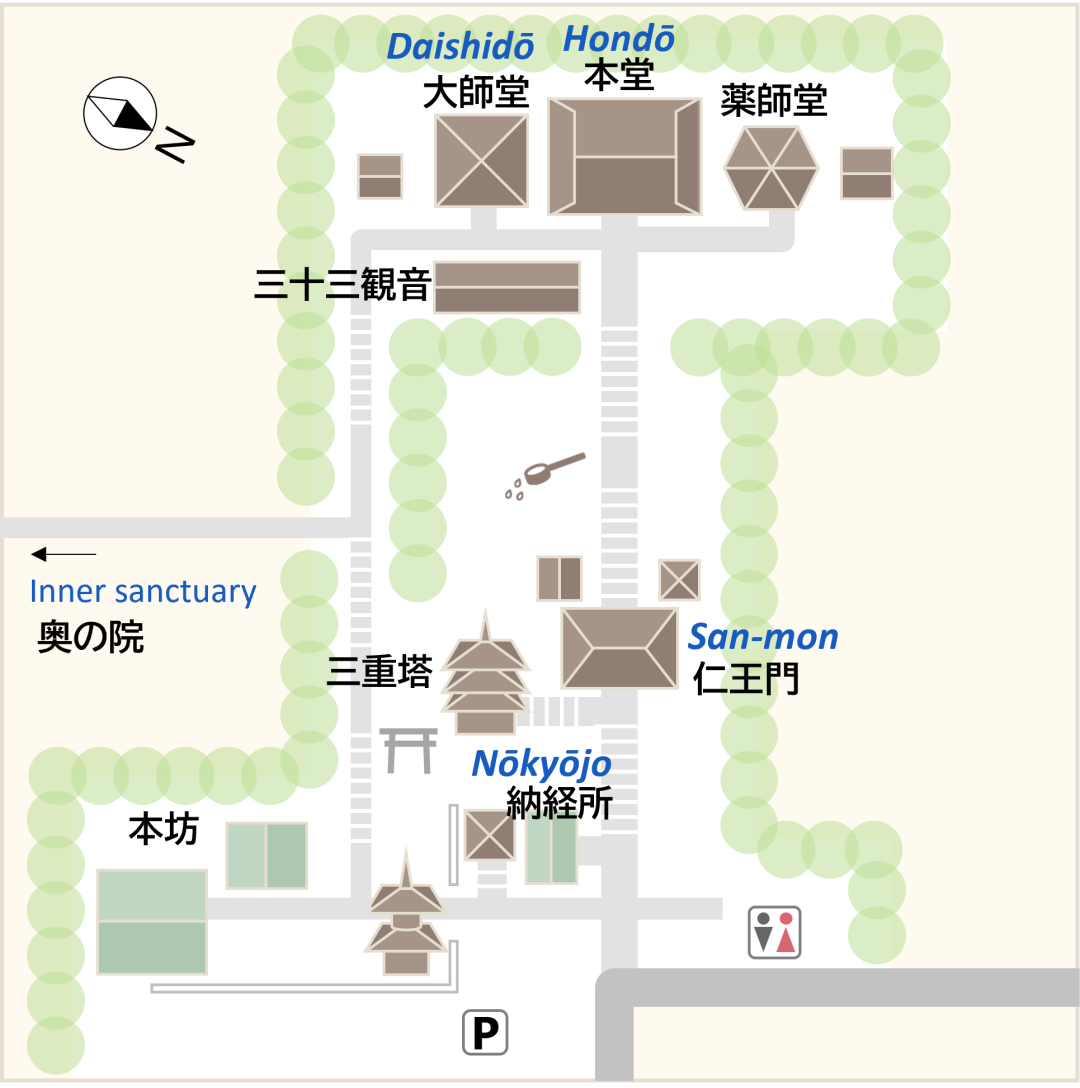The Shikoku Pilgrimage Temple Guide
Temple 36, Shōryūji

Precinct map

History of the temple
When visiting Shōryūji, pilgrims cross the Usa-no-Ohashi Bridge. Until it was opened in 1973, they had to take a boat to go across 400-meter-wide Uranouchi Bay. Kobo Daishi crossed this bay by boat when he built Shōryūji. It is said that he had eight attendants. The descendants of those eight attendants were in charge of this ferry, Ryu no Watashi (Dragon's Ferry), from generation to generation until recently.
In 804, Kobo Daishi traveled to Tang China to study esoteric Buddhism at Shōryūji in Changan (modern day Xian). He received the esoteric Shingon teachings from a priest named Keika (Chinese name Hui Kuo or Huiguo) and became the eighth master of the Shingon sect. He returned to Japan in 806. According to legend, Kobo Daishi wanted to build a temple in Japan to repay the kindness he had received from Keika. He threw a tokkosho (a vajra, a Buddhist ritual implement) toward the eastern sky and prayed that a favorable site would be chosen for the temple. The tokkosho was enveloped in purple clouds and flew away high into the sky.
When Kobo Daishi visited Kochi after returning to Japan, he found the tokkosho hanging in an old pine tree on the mountain where the inner temple of Shōryūji now stands, and he reported this to Emperor Saga (reigned 809-23). In 815 Kobo Daishi built a temple here and enshrined a stone statue of Fudo Myōō (Immovable Wisdom King). The temple was named Shōryūji in honor of his teacher, and the mountain was named Tokko after the tokkosho.
Until the Meiji era (1868-1912), the temple was one of the seven largest temples in Tosa (Kochi), with four branch temples and six side temples. The principal image of Nakiri Fudo Myōō is said to have appeared to calm a storm during the Daishi's voyage to Tang Dynasty China. Even now, it is believed to calm stormy seas and to bring a safe voyage and a good catch of fish.
Highlights
Seated statue of Aizen Myōō
Wooden structure, enshrined in Hondo. It is a National Important Cultural Property. It is enshrined together with a statue of Fudo Myōō, and is said to save people from all suffering.
Inner sanctuary
The inner sanctuary is located about 600 meters south of the temple grounds, at the tip of Yokonami, a small peninsula. It is so close to the tip, it looks like it will fall into the Pacific Ocean. A stone statue of Fudo Myōō is enshrined here, and for many years women were forbidden to enter.
Prefectural Yokonami Nature Park
A park with views of Uranouchi Bay to the north and the magnificent Pacific Ocean to the south is located nearby.

Details
Names: Tokkōzan, Ishanain, Shōryūji
Denomination: Shingon sect, Buzan school
Principal Image: Nakiri Fudo Myōō
Founder: Kobo Daishi
Founded: 815
Access
Address: 163, Ryu, Usa-cho, Tosa City, Kochi 781-1165
Phone: 088-856-3010
Parking: 20 cars (free)
Lodging: None
Official website: None
